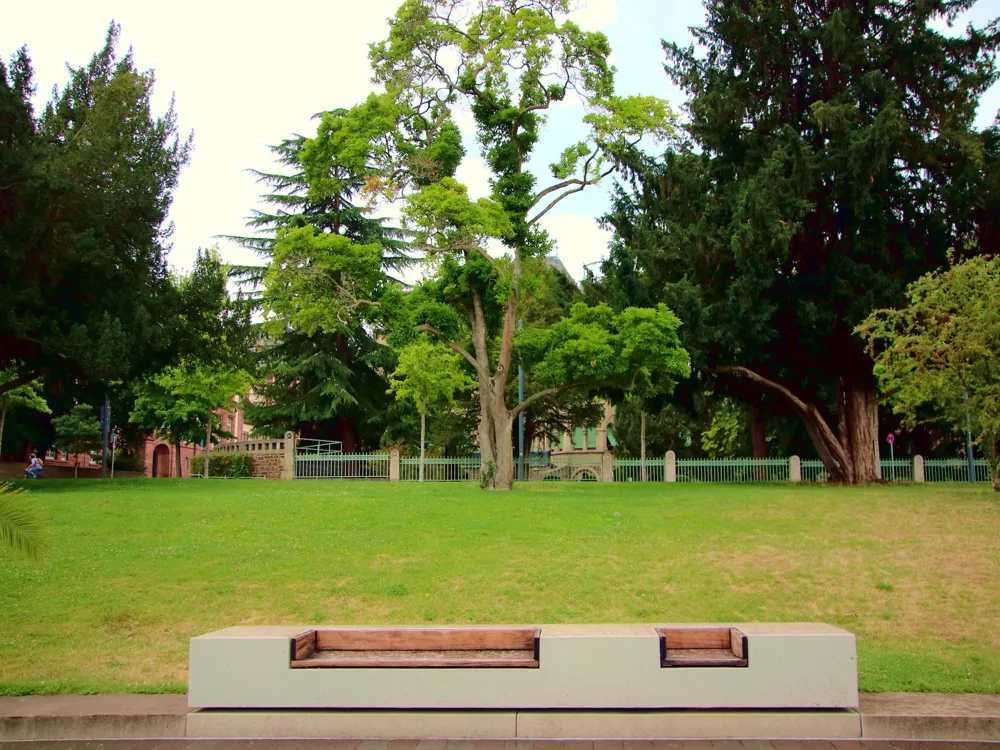Nestled in the heart of Vietnam's vibrant capital, the Hanoi Botanical Garden, also known as Bach Thao Park, is a serene oasis offering a tranquil escape from the bustling city life. Established in the 19th century during the French colonial period, this lush garden spans approximately 10 hectares and is one of Hanoi's oldest and most treasured public spaces. The Hanoi Botanical Garden is not just a display of floral beauty and diversity; it's a living museum that showcases Vietnam's rich botanical heritage.
As you meander through the winding paths of the garden, you are enveloped in a diverse tapestry of flora. The garden is home to a multitude of plant species, both native and exotic, creating a haven for nature enthusiasts and botanists alike. The landscape is dotted with small lakes, bridges, and sculptures that blend harmoniously with the natural surroundings, offering a picturesque backdrop for leisurely strolls and peaceful contemplation.
Beyond its botanical significance, the Hanoi Botanical Garden serves as a vital lung for the city, purifying the air and providing a habitat for various bird species and small wildlife. The garden's historical significance is palpable, with several colonial-era structures still standing, offering a glimpse into the past. It's a place where history, culture, and nature intertwine, providing a unique experience for every visitor.
The Hanoi Botanical Garden is not only a place for relaxation and enjoyment but also an educational hub. It plays a crucial role in conservation efforts, research, and educating the public about the importance of preserving biodiversity. The garden hosts various cultural and educational events throughout the year, making it a dynamic and ever-evolving destination.
Whether you're a local resident seeking a peaceful retreat, a tourist exploring Hanoi's cultural heritage, or a nature lover eager to experience Vietnam's botanical diversity, the Hanoi Botanical Garden is a must-visit destination. Its blend of natural beauty, historical significance, and commitment to conservation makes it a jewel in Hanoi's urban landscape.
The architecture of the Hanoi Botanical Garden is a harmonious blend of natural and man-made elements, reflecting a rich history and a deep respect for nature. As you enter the garden, the first thing that strikes you is the seamless integration of the lush greenery with thoughtfully designed structures and landscapes. This design philosophy is rooted in the garden's origins during the French colonial era, where French landscaping techniques were melded with local Vietnamese traditions.
The layout of the garden is strategic and intentional, designed to create a natural flow that guides visitors through a diverse botanical journey. Pathways meander through the garden, leading to hidden alcoves, serene lakes, and open meadows. The use of natural materials like stone and wood in bridges and benches adds to the rustic charm of the garden, while the small lakes and ponds serve as focal points, reflecting the sky and surrounding greenery.
One of the standout architectural features of the Hanoi Botanical Garden is its greenhouses. These structures, with their classic glass and metal frames, house a variety of exotic and delicate plant species. They are not only functional spaces for plant conservation but also architectural landmarks that blend the old-world charm with modern conservation needs.
The garden's architecture also pays homage to Vietnamese culture and history. Traditional Vietnamese elements are evident in the design of pavilions and sculptures scattered throughout the garden. These structures, often adorned with historical motifs and symbols, offer a space for rest and reflection, allowing visitors to immerse themselves in Vietnam's rich cultural heritage.
The Hanoi Botanical Garden's architecture is more than just aesthetically pleasing; it's a testament to the garden's role as a bridge between the past and the present. It reflects the evolving nature of Hanoi itself, a city that cherishes its history while embracing the future. The garden's architecture, therefore, is not just about buildings and pathways; it's about creating a space where nature, history, and culture coexist in harmony.
The best time to visit the Hanoi Botanical Garden is during the spring (February to April) and autumn (September to November) months. During these periods, the weather is pleasant, and the garden is in full bloom, offering the most vibrant and colorful experience.
When visiting the garden, it's advisable to carry essentials like water, a hat, sunscreen, and insect repellent. Comfortable walking shoes are a must as the garden is expansive and involves a lot of walking.
For photography enthusiasts, the garden offers countless photo opportunities. The best time for photography is early morning or late afternoon when the light is soft and ideal for capturing the garden's natural beauty.
Visitors are encouraged to respect the garden's environment. This means not littering, staying on designated paths, and not picking flowers or damaging plants.
Consider taking a guided tour to fully appreciate the garden's history, architecture, and diverse plant species. These tours offer deeper insights and enrich the overall experience.
The Hanoi Botanical Garden is easily accessible from various parts of the city. Visitors can reach the garden by bus, taxi, or motorbike. The nearest bus stops are within walking distance, and taxis are readily available throughout Hanoi. For a more local experience, renting a motorbike or a bicycle is a great option, offering the flexibility to explore the garden and surrounding areas at your own pace.
Overview of Hanoi Botanical Garden
Architecture of Hanoi Botanical Garden
Tips When Visiting Hanoi Botanical Garden
Best Time to Visit
What to Bring
Photography Tips
Respecting the Environment
Guided Tours
How To Reach Hanoi Botanical Garden
Hanoi Botanical Garden
Hanoi
₹ 15,260 onwards
View hanoi Packages
Weather :
Tags : Garden & Park
Timings : 6:00 AM - 10:00 PM
Time Required : 2 - 2.5 hours
Entry Fee : VND 2,000
Planning a Trip? Ask Your Question
Hanoi Travel Packages
View All Packages For Hanoi
Top Hotel Collections for Hanoi

Private Pool

Luxury Hotels

5-Star Hotels

Pet Friendly
Top Hotels Near Hanoi
Other Top Ranking Places In Hanoi
View All Places To Visit In hanoi
View hanoi Packages
Weather :
Tags : Garden & Park
Timings : 6:00 AM - 10:00 PM
Time Required : 2 - 2.5 hours
Entry Fee : VND 2,000
Planning a Trip? Ask Your Question
Hanoi Travel Packages
View All Packages For Hanoi
Top Hotel Collections for Hanoi

Private Pool

Luxury Hotels

5-Star Hotels

Pet Friendly






















